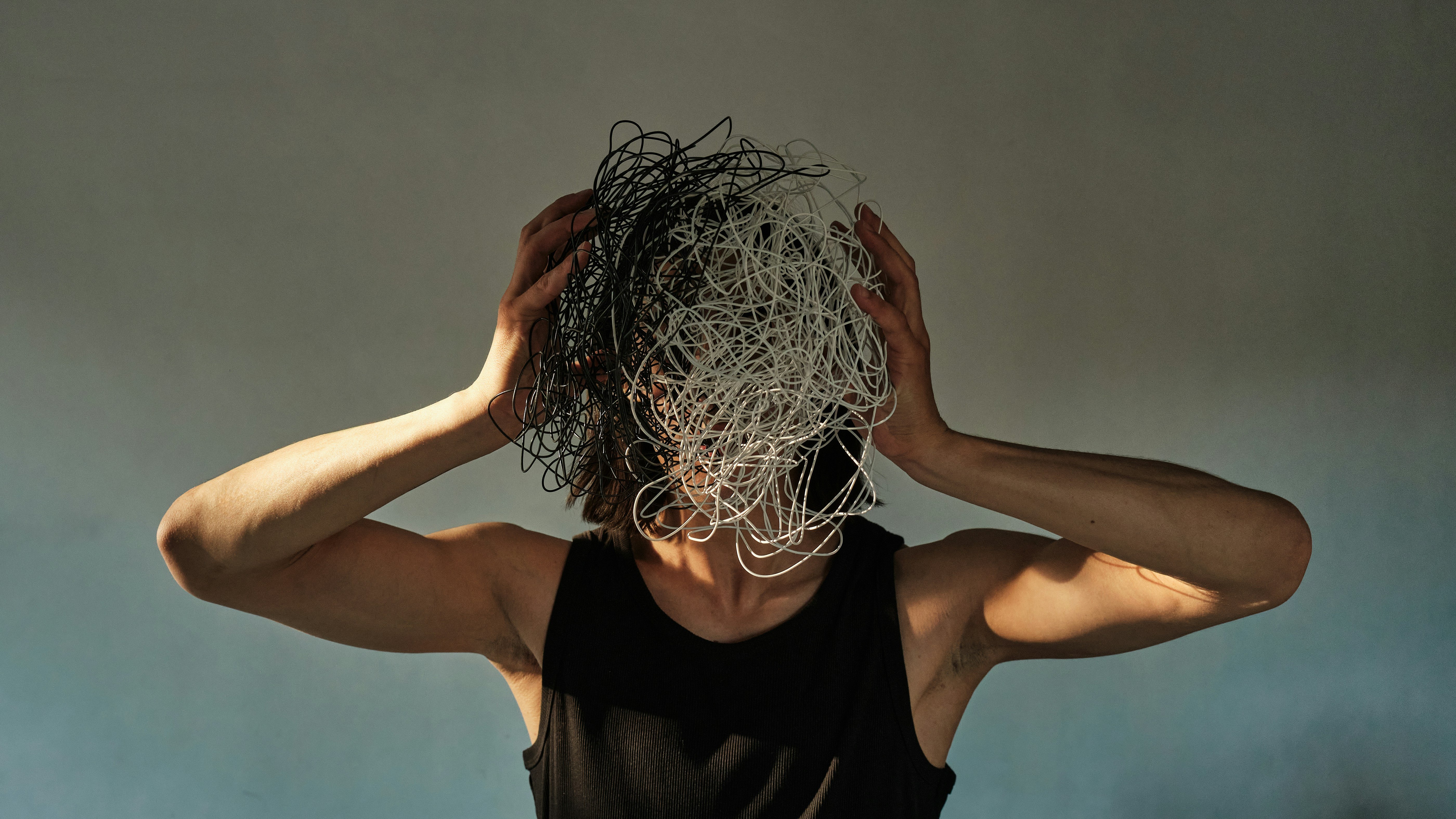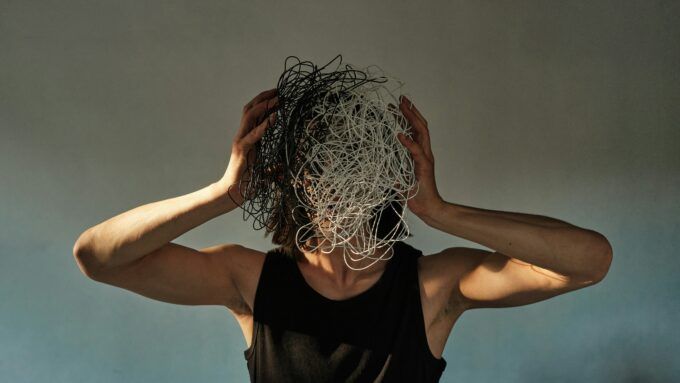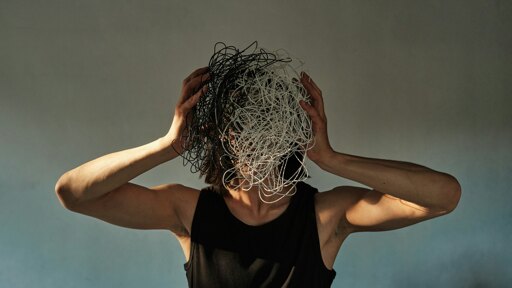

Image by Andrej Lišakov.
The scene was a courtroom turned gladiator pit, where justice isn’t blind but bloodshot, half-drunk, and swinging for the fences. A black-robed executioner masquerading as a judge hoisted a weapon hacked together from the rubble of flouted law books, his arm cocked like some Farage rally thug meting out pub crawl sentences, not in words but in hammering blows of existential angst. Each strike landed not on parchment or precedent but on the trembling body splayed beneath him—the protestor reduced to meat, a sacrifice on the altar of Capital’s institutional rage. The gavel was gone; in its place, raw violence, and the law, stripped of ceremony, stood revealed as a back-alley beating in wigs and wigs alone. The last absurd ornament on the corpse of justice.
The fact that it was sprayed and splayed in the middle of the night on the façade of the Royal Courts of Justice building in central London made it seem like a window, offering a glimpse into the inner working of a system that criminalized any dissent or protest of the made-for-TV genocide occurring in Gaza with not only the tacit support of the government but fueled by its direct and indirect aid.
This wasn’t just a mural, it was a flayed nerve slapped onto the marble face of the mothballed empire’s cathedral of jurisprudence. Banksy’s image functioned like an X-ray of the British soul: the bones of empire, the cartilage of hypocrisy, the tendons of polite cruelty stretching across centuries. You could almost hear the slap of paint as a primal scream against the soft-focus propaganda that insists genocide can be bureaucratically sanitized by ‘recognizing’ the state of Palestine if delivered with enough PowerPoint slides and Westminster accents.
The fact that the work was scrubbed away in daylight — quietly, clinically, as though wiping a crime scene — only confirmed the accusation it leveled: that dissent is not debated, it is crushed and erased.
But was it?
A cleanup crew was rushed in. PPE-geared migrants power washed the painting into permanence, leaving a ghosted image of the crime that was less explicit, more metaphorical and endlessly open to suggestion. It was the scar of that tattoo that just wouldn’t be removed. It was something that happened, no matter how hard you try to forget it with booze, pills and therapy chatbots.
And in that ghosted afterimage — that spectral watermark bleeding through the courthouse stone — the piece metastasized. It no longer belonged to Banksy, or to the courts, or to the state. It belonged to the city, to the passersby who squinted at the residue and felt the uncanny sting of recognition: something happened here. The erasure failed because erasure is itself a mark, and the stain of what was scrubbed is more indelible than the thing itself. The state wanted order but got a haunted ruin humming with spectral graffiti. In the gallery of public space, this became the uncommissioned masterpiece: half-painting, half-crime scene, part-rumor scrawled on the architecture of empire.
Absence can be louder than presence: art as scar tissue, a kind of civic PTSD etched into the building’s DNA. You don’t stand before it so much as recoil from it — as if the courthouse itself were guilty, caught in the act, trying to scrub the blood off its own hands. Yet the spot remains.
And maybe that’s the real exhibition — not the art itself, but the cleanup. The ritual of erasure. Because from London to Los Angeles, from Gaza’s rubble to Spain’s granite roundabouts; power’s first instinct isn’t to confront its reflection, it’s to sandblast it. Empires launder their conscience like they launder their money: offshore, and out of sight.
Every nation has its own version of this midnight maintenance crew — the ones who sweep away the evidence before anyone is the wiser. The brushstroke becomes the broom. The mural becomes the monument. And what gets washed off the wall one night reappears the next morning on a different continent, under a different flag, carrying the same stain. Because what starts as graffiti removal in London becomes historical revision in Madrid. The same impulse that scrubs a wall in daylight also scrubs a century at dusk.
As countries like Spain mandate their fascist past to be power-scrubbed away — monuments disappeared as though they never existed, while their ideas are openly espoused in parliament — maybe the lesson lies not in erasure but in scars. Because scars testify. They don’t flatter, they don’t soothe, they don’t let you forget. They sit there, raised and jagged, a permanent reminder that the wound happened. A scar tells a truer, more haunting story than any cosmetic surgery ever could. Spain’s historical memory laws may be well-intentioned, after all it’s seemingly inconceivable to still have obscene fascist monuments glorified in central roundabouts in quiet provincial capitals like Caceres, Spain, but simply disappearing them won’t magically make it that it never happened.
Spain only perfected what everyone else has been practicing: denial as national pastime. It is far from alone in its selective sandblasting of memory. The whole planet’s been on a bleach binge. The instinct to “clean up” history — to make it smell like moral disinfectant — runs deep. It’s the same reflex that scrubbed Banksy’s courthouse mural and the same one that sends work crews into cemeteries of conscience with power washers and revisionist press releases.
Across the Atlantic, the United States is painting over its own frescoes of guilt with a bucket of “patriotic education.” The new Il Braghettones wear MAGA caps and talk about “heritage,” chiseling Confederate faces back into public squares under the pretense of preserving history while simultaneously banning books that dare to describe what those men actually did. The monuments stay, the memory goes — that’s the trick. Trump’s promised curriculum of “positive history” is just Il Braghettone with a Sharpie, doodling over the genitalia of truth — unless it’s a birthday card to a pedo. The goal isn’t to protect innocence; it’s to keep innocence ignorant.
And if irony still needed a monument, it got one — a life-sized statue of Trump and Epstein cast in a grotesque parody of triumph, mid-dance at a quinceañera party on the Washington Mall. It appeared overnight like a confession left out in daylight and vanished just as quickly, hauled away by the same city that pretends such partners never waltzed together. The footage of its removal spread faster than the sculpture ever did; the erasure went viral. What might have been a passing stunt became a resurrection — the scandal reborn through its own disappearance. The monument proved itself by being murdered in broad daylight. In the age of censorship, even garbage turns into gospel once you try to bury it.
And then up past the 49th parallel there’s Canada — the country that likes to call itself polite while it quietly buried generations of Indigenous children beneath the schoolyards of its own virtue. The Truth and Reconciliation Commission was supposed to be the confessional, but the government kept half the sins redacted. Files withheld, names protected, the crime scene tidied up for the cameras. It was a half-truth wrapped in an apology, a performance of contrition that never risked fully dismantling the structures and organization that made the horror possible.
The Catholic Church — architect and accomplice of the residential school system — still drags its feet through the evidence, hoarding archives like relics, muttering about “individual failings” as if genocide were a bad apple problem. When Pope Francis came to Canada, his sermon of sorrow stopped just short of naming the institution itself — he wept for the victims, but not for the machinery that created them. The Vatican’s guilt was outsourced to the ghosts of long-dead priests. It was an absolution written in disappearing ink.
But truth isn’t reconciliation if it’s partial, and memory can’t be sacred if it’s managed. The graves keep surfacing. The ground keeps remembering, even when the state and the Church try to forget.
And it’s not just a North American export. In Poland, you can be fined for suggesting Polish complicity in the Holocaust — a national memory Botox injection meant to freeze the face of history in a fixed expression of innocence. In Russia, Stalin is being rehabilitated as a stern-but-effective father figure, his purges rewritten as administrative efficiency. In Turkey, to speak of the Armenian genocide still means risking vanishing yourself. In China, Tiananmen never happened — just a stray glitch in the patriotic software. Every nation has its own delete key, its own army of digital janitors sent to wipe the blood from the marble.
Meanwhile, in places that refuse to forget — like Auschwitz or Birkenau — memory is a living wound that insists on being seen. Those barbed-wire museums don’t glorify atrocity; they fossilize it, keep it under glass like an open sore so no one can pretend it healed by itself. You walk through the gas chamber, and it hums with the absence of air. You come to understand that erasure is the final stage of violence — the silence that completes the scream. That’s why such places must remain visible: not to re-traumatize, but to inoculate.
The same goes for art. Every time a painting, a mural, a photograph is censored, pixelated, or pulled down from a wall because it offends, we amputate another nerve ending from the body of culture. From Michelangelo’s censored nudes to Instagram’s dangerous nipples and deleted war images, we’ve been covering the same naked truth for centuries: that we are terrified of seeing ourselves. The algorithm has replaced the red-robed inquisitor, but the punishment is the same — exile to digital oblivion.
Maybe that’s why Banksy’s ghosted mural feels prophetic. You can wash away the paint, but you can’t clean the wall. The faint residue becomes a relic — a secular Shroud of Turin testifying that something unspeakable happened and that someone tried very hard to make sure you didn’t see it. The more they scrub, the louder it screams. The world has become a gallery of ghosts, each one shouting through layers of civic wallpaper: “Remember me.”
Censorship is not the opposite of chaos; it’s chaos disguised as order. The eraser doesn’t bring peace, it only resets the countdown. Because if we can’t look our sins in the eye, we end up worshipping their shadows. That’s how fascism slips back in wearing cologne and calling itself nostalgia. That’s how young Spaniards end up chanting Cara al Sol like it’s a catchy football anthem, unaware they’re harmonizing with ghosts. That’s how white American teenagers march with tiki torches, convinced they’re the ones being erased.
Every culture has its own Valley of the Fallen — the physical or psychological monument to things too uncomfortable to hold but too heavy to throw away. Tear it down and you risk amnesia; leave it standing and you risk glorification. The only solution is the scar: not the clean excision or the uncritical idol, but the healed, visible wound that says, this happened, and it hurt, and we survived it.
Memory is not nostalgia; it’s justice. It is the ongoing trial of the past, held daily in the court of conscience. To censor art is to tamper with evidence. To erase history is to perjure the record. And the world, like that courthouse wall, is running out of surfaces that haven’t already been scrubbed.
Because what’s left when we bleach everything is not purity — it’s absence. And absence, when multiplied, becomes a void large enough for monsters to crawl back through. They’re here, they’re in power, and they’re frantically hitting the delete button.
So yes, keep the scars. Keep the ghosts. Let the walls speak, even if the language is pain. Especially then. Because when a civilization no longer wants to see its wounds and starts mistaking amnesia for healing, it’s already carving new wounds with the same unwashed knife.
The post Censorship is Chaos Disguised as Order appeared first on CounterPunch.org.
From CounterPunch.org via this RSS feed


